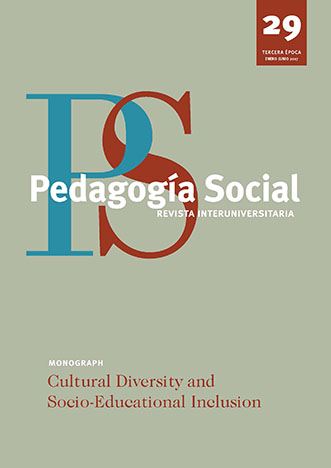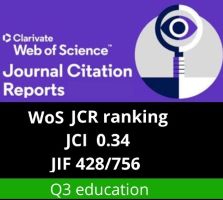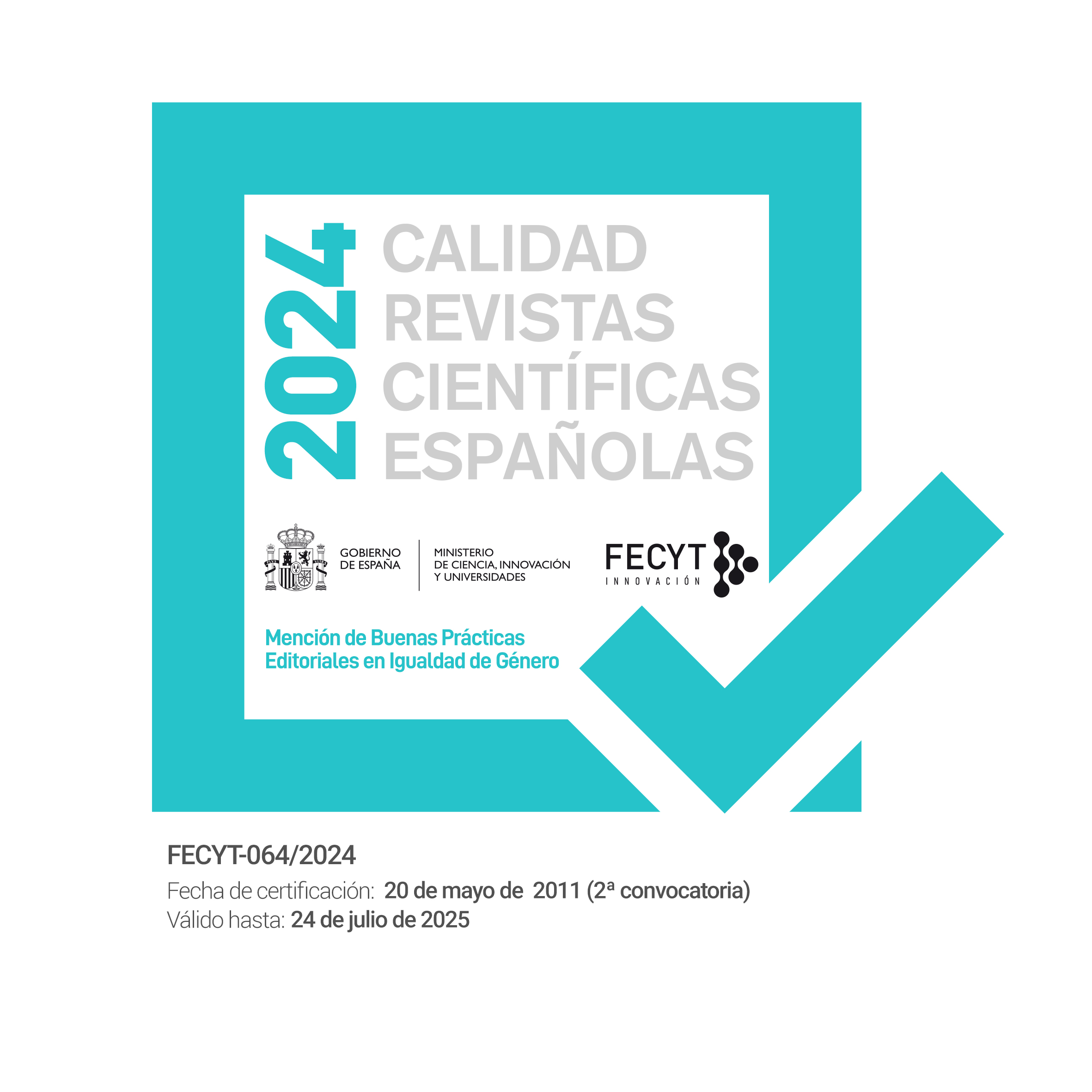Innovative technologies as Social Pedagogy: Transforming Informal Educational practices in the United States
DOI:
https://doi.org/10.7179/PSRI_2017.29.04Keywords:
Technology, Learning, Pedagogy, Teacher preparation, Digital literacy, Teaching methods, Transformative PedagogyAbstract
The rapid technological changes that have occurred in recent years have become critical for the academic and professional success of novice teachers. This study illuminates the use of digital autonarratives as social transformative pedagogy. The process of telling ones’ story—and in the case of our participants, the process of defining and redefining self as teacher through the medium of technology—documents the creation of a bilingual 21st century teacher. Findings indicate the need for preservice teachers to engage in technologically mediated learning to develop a practical understanding of technology integration. The goals of this research lend additional insight into the direction that teacher preparation programs must take to better serve bilingual teacher candidates in their educational journey to become technologically competent teachers who are prepared to meet the needs of an increasingly culturally and linguistically diverse school-age population.Downloads
References
References
Alanís, I. (2014). Preparing aspirantes: Synchronizing culture and digital media. In B. B. Flores, O. Vásquez & E. Riojas Clark (Eds.). Generating Transworld Pedagogy: Reimagining La Clase Mágica. Lexington Publishers, Rowman Littlefield Publishing Group.
Alanís, I., Machado-Casas, M., & Ruiz, E. (2014). Beyond the technical aparatus: Identity, connections, and the use of “Autonarrativas virtuales” Virtual Autonarratives. NABE Journal for Research and Practice 5. Accessed at https://www2.nau.edu/nabej- p/ojs/index.php/njrp/article/view/22/30
Andrews, M., Squire, C., & Tambokou, M. (Eds.) (2008). Doing narrative research. London: Sage.
Ben-Jacob, M., Levin, D., & Ben-Jacob, T. (2000). The learning environment of the 21st century. AACE Journal 1(13), 8-12.
Benmayor, R. (2008). Digital storytelling as a signature pedagogy for the new humanities, Arts and Humanities in Higher Education, 7(2), 188-204.
Brewer J. R. (2006). Narrative research and the challenge of accumulating knowledge. Narrative Inquiry, 16(1), 3-10.
Brewer, S. & Klein, J. D. (2006). Type of positive interdependence and affiliation motive in an asynchronous, collaborative leaning environment. Educational Technology Research and Development 54 (4), 331–354.
Buckingham, D. (2006). Is there a digital generation? In D. Buckingham and R. Willett (Eds.), Digital generations: Children, young people, and new media (pp. 1–13), Mahwah, New Jersey: Lawrence Erlbaum.
Bullock, D. (2004). Moving from theory to practice: An examination of the factors that preservice teachers encounter as they attempt to gain experience teaching with technology during field placement experiences. Journal of Technology and Teacher Education, 12(2), 211–237.
Chapelle, C. (2005). Hints about CALL use from research. PacCALL Journal, 1(1), 1-8.
Chen, R. -J. (2010). Investigating models for preservice teachers’ use of technology to support student-centered learning. Computers and Education 55, 32-42.
Clarke, M. (2009). The ethico-politics of teacher identity. Educational Philosophy and Theory, 41(2), 185-200.
Crouch, R. (2012). The United States of education: The changing demographics of the United States and their schools. Center for Public Education. Retrieved from http://www.centerforpubliceducation.org/You-May-Also-Be-Interested-In-landing-page-level/Organizing-a-School-YMABI/The-United-States-of-education-The-changing-demographics-of-the-United-States-and-their-schools.html.
Darder, A. (1991). Culture and power in the classroom: A critical foundation for bicultural education. New York: Bergin & Garvey.
Darder, A. (1995). Bicultural identity and the development of voice. In J. Frederickson (Ed.), Reclaiming our voices: Bilingual education, critical pedagogy and praxis (pp. 35–52). Ontario: California Association for Bilingual Education.
Dexter, S., & Riedel, E. (2003). Why improving preservice teacher educational technology preparation must go beyond college’s walls. Journal of Teacher Education, 54(4), 334– 346.
Ek, L., Machado-Casas, M., Alanís, I., & Sánchez, P. (2010). Crossing cultural borders: La Clase Mágica as a university-school partnership. Journal of School Leadership 20(6), 820-849.
Emerson, R., Fretz, R., & Shaw, L. (1995). Writing ethnographic fieldnotes. Chicago: University of Chicago Press.
Franklin, C. (2007). Factors that influence elementary teachers use of computers. Journal of Technology and Teacher Education, 15(2), 267–293.
Gallego, M. & Vasquez, O. A. (XXXX) Praxis in dis-coordination. In Portes, P. and Salas, S. (Eds.) Vygotsky in the 21st Century: Cultural historical theory and research in non-dominant communities. New York: Peter Lang Publishing.
Gordon, D.T. (Ed.). (2000). The digital classroom: How technology is changing the way we teach and learn. Cambridge, MA: The Harvard Education Letter.
Gorski, P. (2003). Privilege and repression in the digital era: Rethinking the sociopolitics of the digital divide. Race, Gender, & Class 10 (4), 145-176.
Grant, C. A., & Sleeter, C. E. (2011). Doing multicultural education for achievement and equity (2nd ed.). New York, NY: Routeledge.
Hammerness, K., Darling-Hammond, L., Barnsford, J., Berliner, D., Cochran-Smith, M.,
McDonald, M., et al. (2005). How teachers learn and develop. In L. Darling-Hammond & J. Bransford (Eds.), Preparing teachers for a changing world: What teachers should learn and be able to do (pp. 358-389). San Francisco: Jossey-Bass.
Knobel, M., & Lankshear, C. (1999). Ways of knowing: Researching literacy. Newton, Australia:
Primary English Teachers’ Association.
Lee, R. (2006). Effective learning outcomes of ESL elementary and secondary school students utilizing educational technology infused with constructivist pedagogy. International Journal of Instructional Media, 33, 87-93.
Machado-Casas, M. (2009). “Coyotes” tecnológicos: Sobrevivencia Transnacional de Comunidades Indígenas Latinas en los Estados Unidos. DIDAC, 53.Universidad IberoAmericana, México.
Marsland, N.,Wilson, I., Abeyasekera, S., & Kleth, U. (1999). A methodological framework for
combining quantitative and qualitative survey methods. Reading, UK: Social and Economic Development Department, Natural Resources Institute and the Statistical Services Centre, University of Reading.
Mather , M., & Foxen, P. (2010). America's future: Latino child well-being in numbers and trends. National Council of La Raza, 1. Retrieved from http://www.americaspromise.org/~/media/Files/Resources/NCLR- Americas Future.ashx
Mossberger, K., Tolbert, C., & Stansbury, M. (2003). Virtual inequality: Beyond the digital
divide. Washington, D.C.: Georgetown University. Press.
Nieto, S. & Bode, P. (2011). Affirming diversity: The sociopolitical context of multicultural education (6th Ed.). New York: Pearson Education.
Prensky, M. (2001). Digital natives, digital immigrants. On the Horizon, 9 (5), np.
Rico, R. J., Sánchez, P., Pallares-Weissling, A. (2012). A snapshot of Latina/o bilingual teacher candidates and their use of iPads in an after-school technology program. Journal of Bilingual Education Research & Instruction, 14(1), 95-115.
Russell, M., Bebell, D., O’Dwyer, L., & O’Connor, K. (2003). Examining teacher technology use: Implications for preservice and inservice teacher preparation. Journal of Teacher Education, 54(4), 297–310.
Sánchez, P. & Salazar, M. (2012). Transnational computer use in urban Latino immigrant communities: Implications for schooling. Urban Education. 47(1), 90-116.
Schlager, M. S. & Fusco, J. (2006). Teacher Professional Development, Technology, and
Communities of Practice: Are We Putting the Cart Before the Horse?. The Information Society: An International Journal. 19(3), 203-220.
Schrum, L. (1999). Technology professional development for teachers. Educational Technology Research and Development, 47(4), 83–90.
Schellens, T., Van Keer, H., & Valcke, M. (2005). The impact of role assignment on knowledge constructionin asynchronous discussion groups: A multilevel analysis. Small Group Research, 36, 704-745.
Vásquez, O. A. (2003). La Clase Mágica: Imagining optimal possibilities in a bilingual community of learners. New Jersey: Lawrence Erlbaum Associates, Inc.
Vásquez, O. A. (2008a). Reflection: Rules of engagement for achieving educational futures. In L. L. Parker (Ed.), Technology-mediated learning environments for young English learners: Connections in and out of school. New York, NY: Taylor & Francis Group.
Vásquez, O. A. (2008b). “Technology out of school: What schools can learn form community-based technology.” In L. Smolin, K. Lawless, & N. C. Burbules (Eds.). The 106 yearbook of the National Society for the Study of Education: Information and Communication Technologies: Considerations of Current Practice for Teachers and Teacher Educators, 106, 182-206.
Vygotsky, L.S. (1978). Mind in society. Cambridge, MA: Harvard University Press.
Zevenbergen, R. (2007). Digital natives come to preschool: implications for early childhood practice. Contemporary Issues in Early Childhood 8(1), 19-29. http://dx.doi.org/10.2304/ciec.2007.8.1.19
Downloads
Additional Files
Published
How to Cite
Issue
Section
License
Copyright (c) 2016 Pedagogía Social. Revista Interuniversitaria

This work is licensed under a Creative Commons Attribution-NonCommercial-ShareAlike 4.0 International License.
Copyright and right to archive
The published version of the articles can be self-archived by their authors in open access institutional and thematic repositories. However, Pedagogía Social. Revista Interuniversitaria must authorize partial or global reutilisation on new papers or publications.
Published papers must be cited including the title of the journal Pedagogía Social. Revista Interuniversitaria, issue, pages and year of publication
Ethical responsibilities
Pedagogía Social. Revista Interuniversitaria does not accept any material that has been previously published in other documents or publications. Authors are responsible for obtaining the required permissions for partial or global reproduction any material from other publications, and to correctly quote its origin.
Pedagogía Social. Revista Interuniversitaria is obliged to detect and report fraudulent practices.
Only those who have intellectually contribute to the development of the paper must appear as authors.
The journal expects authors to declare any commercial partnership that might entail a conflict of interest with respect to the submitted article.
Authors must mention in the article, preferably in the “methodology” section, that the procedures used during the samplings and controls have been made after getting informed consent.
The journal will not use any received contribution in a way other than the goals described in these guidelines.
Copyright Notice
© Pedagogía Social. Revista Interuniversitaria. Papers published in both the printed and online versions of this Journal are property of Pedagogia Social. Revista Interuniversitaria, being required to cite the source in any partial or total reproduction.
Unless otherwise stated, all content of this electronic journal is distributed under "Creative Commons Attribution-Non commercial 3.0 Spain" (CC-by-nc) license for use and distribution. The informative version and the legal text of this license is available here. This has to be expressly stated in this way when necessary.






